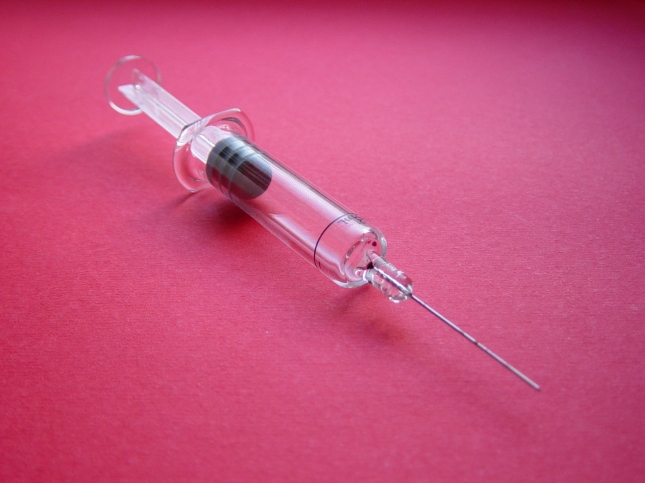 I am in nursing bliss: the happiest place on earth! (Or at least as far as the hospital environment is concerned.) I started my OB rotation yesterday with no real expectations or high standards to meet. I have baby-sat plenty of little munchkins, but none so wee as a newborn. And I have surprisingly little experience with pregnant and laboring mamas-to-be. I walked into this rotation bleary-eyed and lacking my ritual “it’s-too-gosh-darn-early-to-be-awake” pre-hospital caffeine infusion, or even breakfast. I didn’t have these things because I was running late on this particular day, but I expected it to be okay since most first days are mellow and mainly orientation-centered.
I am in nursing bliss: the happiest place on earth! (Or at least as far as the hospital environment is concerned.) I started my OB rotation yesterday with no real expectations or high standards to meet. I have baby-sat plenty of little munchkins, but none so wee as a newborn. And I have surprisingly little experience with pregnant and laboring mamas-to-be. I walked into this rotation bleary-eyed and lacking my ritual “it’s-too-gosh-darn-early-to-be-awake” pre-hospital caffeine infusion, or even breakfast. I didn’t have these things because I was running late on this particular day, but I expected it to be okay since most first days are mellow and mainly orientation-centered.
Nope, not for me on this day.
I arrived at our prearranged meeting site in the hospital and our preceptor immediately announced that myself and another student would be marching straight up to Labor & Delivery for observation of c-sections and vaginal deliveries! Wednesday was my day for vaginal birth, and Thursday was supposed to be cesarean. Shocked, I completely forgot to even say that I needed to eat something first, and once I realized my error, I just crossed my fingers and swore to myself that I wouldn’t pass out no matter what crazy things I saw. So, up we went, me still trying to surreptitiously rub the sleep from my eyes. The first nurse I was placed with asked me point-blank if I could go get my nursing textbooks or homework and sit in a corner somewhere far away from the laboring mother because she said the mom was anxious about having me there. I must have looked crestfallen, because when I awkwardly mumbled something about this being my only chance to witness a real-live delivery and really wanting to be there, she heaved a sigh and said,
“Oh, well, fine. Let’s see if there’s another nurse that has a mom that’s further along in her labor. You know, my lady’s only 5 cm dilated so far, it could be hours.”
Thank goodness, I thought. That nurse must have woken up on the wrong side of the bed, or quite possibly off the bed entirely, and I was just thrilled to be pawned off on another nurse who, thankfully, turned out to be the complete opposite of Ms. Negative Nelly. This new patient was a mere 18 years old, but there’s something about a huge baby bump that makes one look automatically older. I had to keep reminding myself of how incredibly young she is. As I walked in, she was just receiving an epidural. She was 4-5 cm dilated, but her contractions were already 2 minutes apart.
From the get-go I was enthralled. My nurse showed me the fetal heart and contractions monitors, and she taught me all about monitoring the baby’s heart rate during the contractions, and comparing it to the feed that was being spit out of the machine, to make sure there weren’t an excessive number of variable deceleration, indicating cord compression, and that the baby wasn’t in danger of becoming hypoxic. The fact that this mother-to-be was already having close contractions at 5 cm meant that she certainly didn’t need any other stimulant like Pitocin, and in fact, they really didn’t want the contractions to get much closer together at all. After we gave time for the pain meds to kick in (and boy did they work – she went from writhing and twisting in bed, to a wan smile saying that she couldn’t feel anything below the umbilicus anymore) we took a short break. My nurse told me that she was going to go get some breakfast because it would surely take awhile for the woman to fully dilate. I counted my lucky twinkling stars that I wouldn’t get all hypoglycemic and pass out on her…(how mortifying, even though I am still just waiting for that day to come). 20 minutes and an apricot-studded scone later, I came back up to Labor & Delivery. Immediately I saw that our young mother was quite the overachiever! When I arrived, she was already 10cm dilated, fully effaced, and ready to push. All in a matter of the 20 short minutes that it took me to scarf a scone! I hurried in behind my nurse and we jumped into action. Or rather, I should say she jumped into action. I mainly watched, and pitched in where I could.
It was only a few short minutes until we had the bed revamped into a birthing bed, the resident who would deliver the baby was fully gowned and ready to go, and we had helped usher her family out of the room – saying that only 2 people could be present form her family during the birth due to space constrictions. (I will amend the story at this point to say that by the end of the birth process, I am fairly certain that I counted at least 6 people from the family present and accounted for, surrounding the bed, but who’s really counting anyways?) Anyways, at this point, I was awkwardly peering over my nurse’s shoulders as she and the birthing mother’s own mother helped support her legs outwards while she pushed through her first contractions. The doctor felt for the baby’s head, and found it well-positioned and ready for steady pushing. To maximize each contraction, my nurse told the laboring mother to take a deep breath in and push hard for a count to ten, and then let the breath out and do it again. She did it three times in quick succession for each contraction, and then took a brief respite while waiting for the next wave of contraction to arrive. I was completely mesmerized.
My first glimpse of another life emerging from the mother was a shock of a black hair. My jaw almost dropped and I wanted to pinch myself, it all felt so dreamy. But there was barely time to think. My nurse leaned over to me and verified that I wasn’t about to pass out, to which I quickly shook my head, “No, no, no,” beaming. She smiled back and said, “OK, well would you like to help hold her legs open and count the contractions for her?” Thrilled, I answered in the affirmative and took her spot at the helm, which happened to also be the best viewing spot in this small birthing theater. I didn’t miss the popcorn a bit. My first count was hesitant, but I quickly learned my role and loved it. I encouraged her to take in a deep breath and push. I counted to ten, each number, internally encouraging her to push a little more, to give it her all. After each contraction, I warmly told her how well she was doing, and encouraged her to rest for the brief interlude. During this short period, which still seemed to stretch on for ages, I don’t remember looking at anyone else in the room besides the mother. It could have just been the two of us. I was so alive in this moment, helping a laboring mother was thrilling and intimate and so impossibly surreal, I couldn’t think about anyone or anything else. Watching the baby’s head slowly emerge was thrilling and compelling, while also shocking. Not only the obvious factor that something so big can emerge from somewhere seemingly so small, but because another life was about to appear in the world. And when he did, that first breath was one of the most miraculous things I have ever witnessed. The tiny blue and white body seemed to almost instantaneously swap for a healthy pink tone as the tiny infant drew in his first breath and let out his first lusty cry to the world. So many factors must come together for this breath and subsequent cry to occur and I couldn’t take my eyes of this tiny miracle. Leaning in close, I watched as the doctor clamped down on the umbilical cord, now rendered obsolete, and let the eager medical student do the honors of cutting it. In his eagerness however, and my obtuse baby blissed-out unawareness, as he cut the cord, her sent a smattering of ruby red blood droplets showering down all around, including on my scrubs and forehead. Whoops.
Said medical student also threw out the placenta by accident a few minutes later, in an apparent effort to be helpful and start the clean up process. Double whoops. The nurse and I had to go digging in the biohazard bin for it. Gross.
 After the last vestige of physical connection between mom and babe was severed, the nurse and I rushed the baby to the warmer to vigorously rub his tiny body, removing excess vernix and stimulating his nascent blood circulation. I didn’t know about skin-to-skin time with mom and baby at that point; now I wonder whether it’s better to hand the baby right to mommy – disregarding any extraneous fluids, serum or vernix for the moment. Hopefully, I will see many more births in the future and many different methods for doing things. In this case however, without discussing whether this was the best way to do it, we spent about 5 minutes with the baby, taking footprints, extracting cord blood samples from the placenta, and administering the baby’s first medications: prophylactic eye cream and a Vitamin K shot to his miniature thigh muscles. Then I got to watch my first example of baby burrito-ing. The nurse twisted the baby up so fast and expertly in a little bundle that I would have missed it if I blinked. Peeping out of the burrito bundle was a teeny tiny squishy face with a spiky black head of hair. We then passed the little bundle of joy off to mom for their first precious moments together.
After the last vestige of physical connection between mom and babe was severed, the nurse and I rushed the baby to the warmer to vigorously rub his tiny body, removing excess vernix and stimulating his nascent blood circulation. I didn’t know about skin-to-skin time with mom and baby at that point; now I wonder whether it’s better to hand the baby right to mommy – disregarding any extraneous fluids, serum or vernix for the moment. Hopefully, I will see many more births in the future and many different methods for doing things. In this case however, without discussing whether this was the best way to do it, we spent about 5 minutes with the baby, taking footprints, extracting cord blood samples from the placenta, and administering the baby’s first medications: prophylactic eye cream and a Vitamin K shot to his miniature thigh muscles. Then I got to watch my first example of baby burrito-ing. The nurse twisted the baby up so fast and expertly in a little bundle that I would have missed it if I blinked. Peeping out of the burrito bundle was a teeny tiny squishy face with a spiky black head of hair. We then passed the little bundle of joy off to mom for their first precious moments together.
I can hardly put words to the beauty and sheer surrealism of this event. These first moments of life really bring it full circle for me. It’s mind-blowing to think that this full-fledged tiny human being emerged into the world from the meeting of just a few specialized cells, designed to do the world’s most magical thing when they met in an event called conception, only 9 months ago. It was miraculous to watch life arrive. It all happens in such a natural way, yet it looks so insanely foreign to a newcomer. I felt so privileged to be present for this birth, so amazed to witness firsthand the miracle of life. The human body is amazing, and in countless ways I truly cannot believe what a rewarding profession I have entered; I am so excited to be here.








